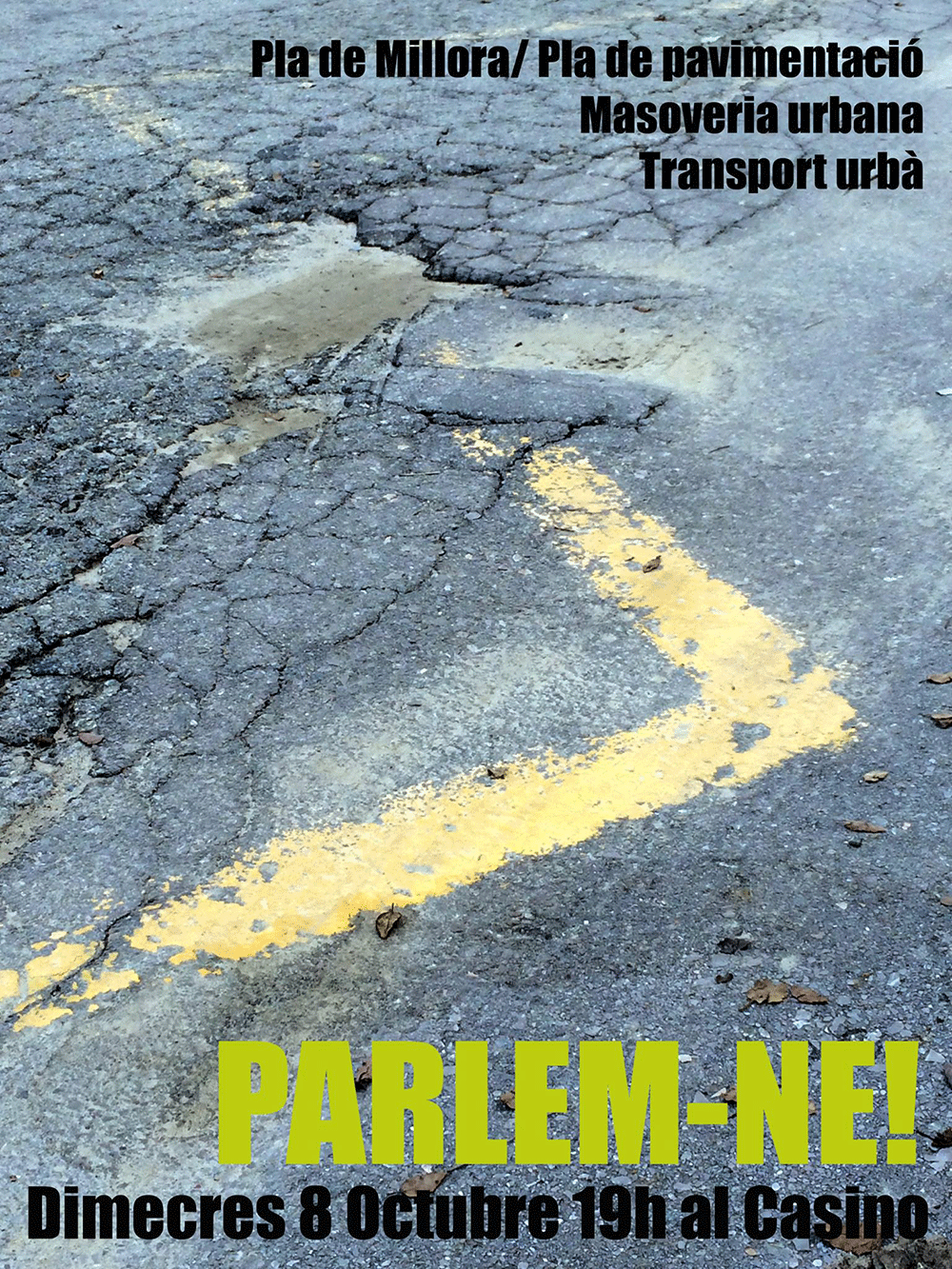In 2013, the La Floresta neighbourhood of Sant Cugat del Vallès got good news from its district council: Área Metropolitana de Barcelona (AMB – Barcelona Metropolitan Area) had analysed the area to set criteria for paving the roads and future urban development. In the same session, the government presented its Plan against Dust and Mud, which aimed to pave the neighbourhood and came up against very vocal opposition from residents, as it didn’t follow any of the criteria established in the analysis that had just been presented. Some residents wanted the streets to be asphalted, while others preferred the residential streets to remain as they were, dirt roads.

The La Floresta Speaks group, with no institutional ties, held a debate and several work sessions to find a solution everyone could agree on. The residents decided to pave the streets, but according to mobility and sustainability criteria, as most of the streets involved run alongside Collserola Park, creeks, paths and trails, and are dead ends. All of the streets affected were far from the main road system, which was already fully paved. The plan they came up with only covered asphalting the roads, not any urban development.

As a part of our community activism, Leve Projects helped establish this project, simplifying the basic information from the analyses conducted by AMB to make it understandable to all residents. Based on new maps, which reflected elements such as the limits of the developed areas and the forest, the dead-end streets and more, the residents had their say, creating a catalogue of special cases to take into account.

The sessions led to a proposal to combine layers of impermeable asphalt and permeable elements so that the rain water could filter through; making unique, asymmetrical platforms between the homes on the streets and taking into account how they are used as urban streets but within a natural park. A series of proposals from residents were collected in a document with a list of priorities. Later, the city council took the preliminary project and, in preparing it for tender, removed some of the elements that had come from the citizen participation, including the interaction with Collserola Park.

Nevertheless, the experience was very positive, as it got residents from the neighbourhood involved in an action that would affect their daily lives as soon as it was applied. It showed that with guidance from experts, a wide variety of residents in a neighbourhood can understand, propose alternatives and have an impact on urban development and mobility around them. The great value, mainly, from the process was finding a meeting point for people with such opposing viewpoints: paving or leaving the dirt roads.


